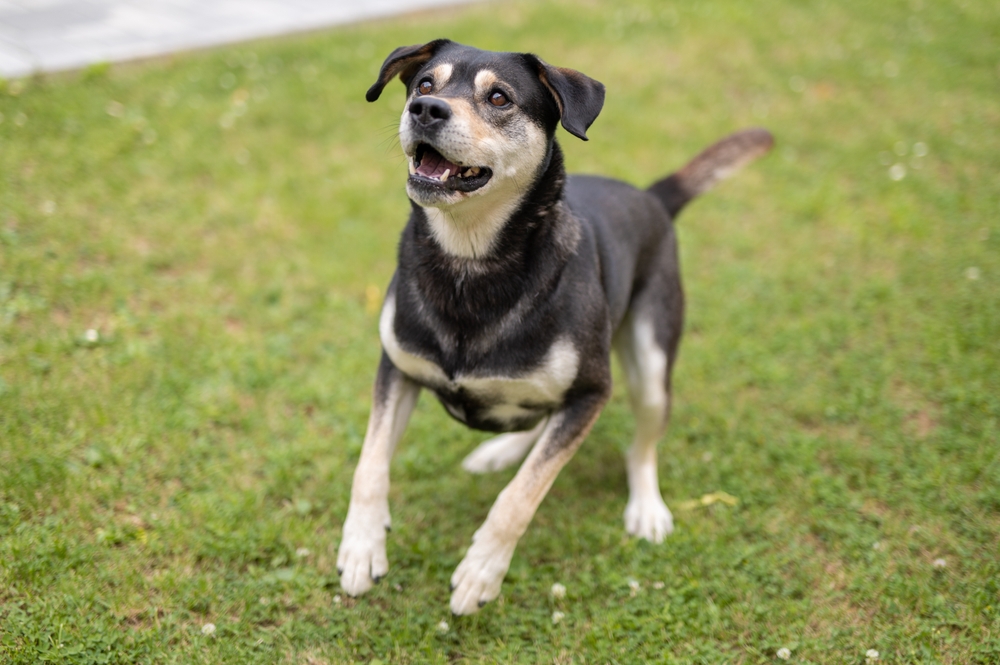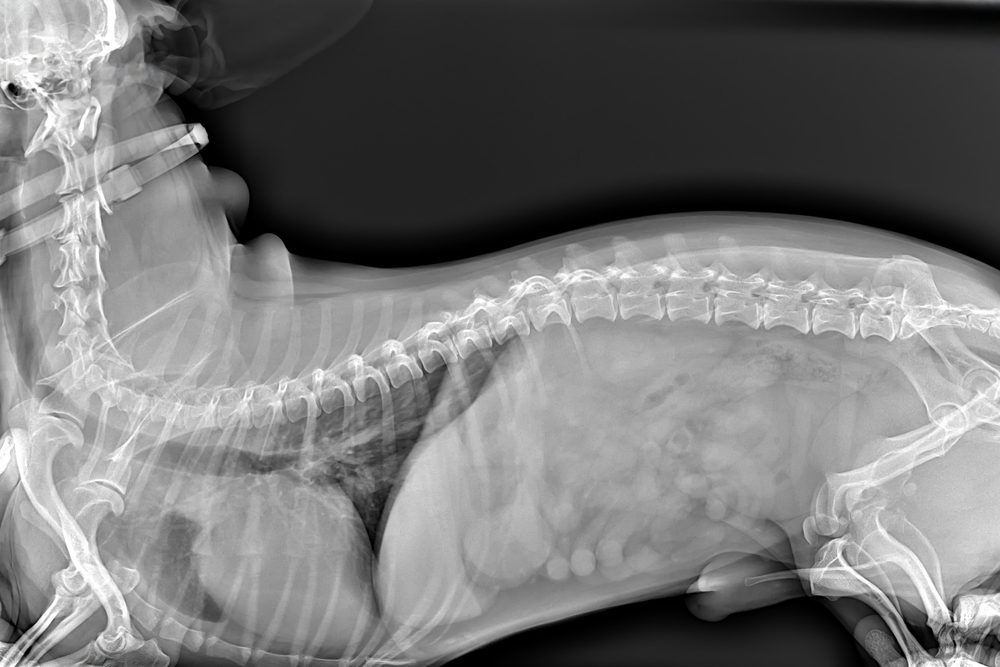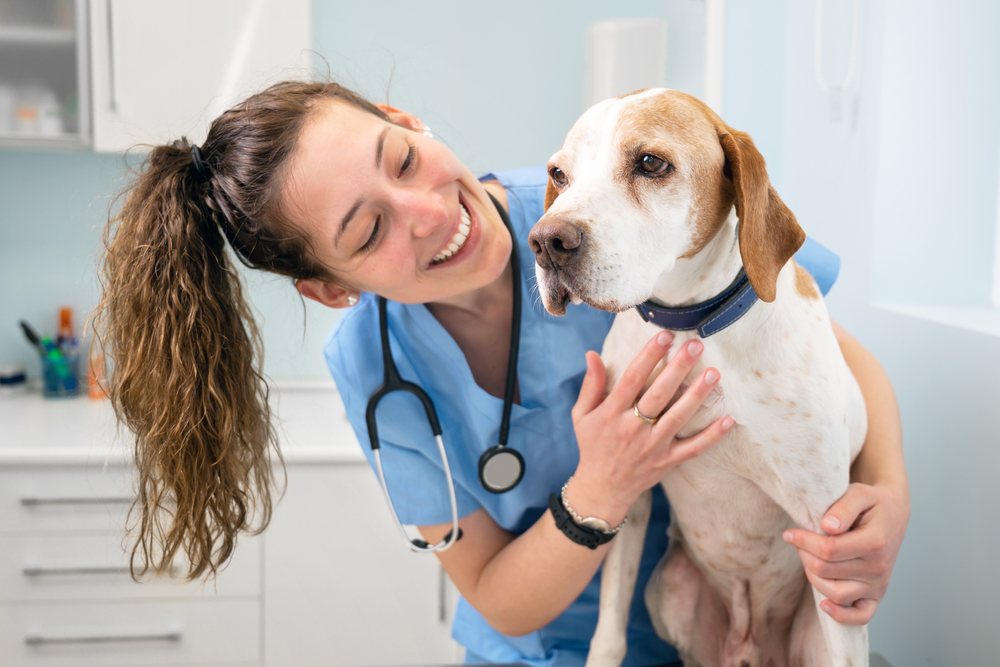Dog xrays serve as an essential diagnostic tool in veterinary medicine, allowing veterinarians to see inside your pet’s body without invasive procedures. These images can reveal a wealth of information about your dog’s bones, organs, and tissues, helping to identify everything from broken bones to kidney stones and internal masses.
Understanding what happens during an dog xray appointment helps pet owners prepare appropriately and know what to expect. While most dog xrays take between 10-30 minutes to complete, several factors can influence this timeline, including the area being examined, whether multiple views are needed, and if your pet requires sedation for the procedure.
What Is a Dog Xray?
A dog xray (also called radiograph) is a non-invasive diagnostic imaging technique that uses small amounts of radiation to create pictures of the inside of your pet’s body. When the xray beam passes through your dog’s body, different tissues absorb different amounts of radiation based on their density. Bones appear white because they absorb more radiation, soft tissues appear in various shades of gray, and air appears black. These contrasts allow veterinarians to examine internal structures without surgery, making a dog xray an accurate diagnostic tool for detecting abnormalities, monitoring disease progression, and guiding treatment plans.

4 Types of Dog Xrays Used
- Digital Radiography (DR) – The most modern form of dog xray technology that produces immediate digital images on a computer screen, allowing for quick diagnosis and easy image sharing with specialists if needed.
- Computed Radiography (CR) – Uses imaging plates instead of traditional film, which are then processed through a digitizer to create the image, offering better quality than film but requiring slightly more processing time than fully digital systems.
- Contrast Studies – Special xrays that use contrasting agents (barium or iodine-based substances) to highlight specific organs or systems, commonly used for examining the digestive tract, bladder, or kidneys to detect stones, blockages, or abnormal function.
- Dental Radiographs – Specialized, smaller xrays focused specifically on the teeth and surrounding structures to detect dental disease below the gumline, fractured teeth, or jaw abnormalities.
5 Common Reasons a Dog Xray Is Needed

Suspected Fractures or Bone Abnormalities
Xrays excel at revealing bone structures, making them the primary diagnostic tool when your veterinarian suspects your dog has suffered a fracture or other skeletal injury. These images can show the exact location and severity of breaks, helping veterinarians determine the appropriate treatment approach. Beyond acute injuries, a dog xray can also reveal bone abnormalities like arthritis, bone tumors, or developmental issues such as hip dysplasia, allowing for early intervention and management of these chronic conditions.
Bladder Stones Detection
Bladder stones appear as distinct opaque structures within the urinary bladder on dog xray images, making radiography an excellent tool for their detection and monitoring. When a dog shows symptoms like frequent urination, blood in urine, or straining to urinate, bladder stones are often suspected. Xrays not only confirm the presence of most types of stones (some less dense stones may require ultrasound for detection) but also help determine their size, number, and location. This information proves crucial for deciding whether surgical removal, special diets, or medication would be the most effective treatment approach.
Chest and Lung Examination
Chest xrays provide valuable information about your dog’s heart, lungs, and surrounding structures. Veterinarians rely on these images when dogs exhibit symptoms like coughing, difficulty breathing, or abnormal heart sounds. The xrays can reveal conditions such as pneumonia (appearing as white patches in the normally dark lung fields), heart enlargement, lung tumors, or fluid accumulation in the chest cavity. Multiple views are typically taken during chest xrays to ensure comprehensive evaluation of these vital organs from different angles, helping to pinpoint the exact nature and location of any abnormalities.

Abdominal Disorders
Abdominal xrays offer a window into your dog’s digestive system and surrounding organs, proving invaluable for diagnosing numerous conditions. When dogs present with symptoms like vomiting, diarrhea, abdominal pain, or suspected ingestion of foreign objects, these images can often identify the cause. A dog xray can detect intestinal blockages, abnormal gas patterns indicating obstruction, organ enlargement, masses, or the presence of foreign materials like toys or rocks that dogs may have swallowed. For certain conditions, abdominal xrays serve as a critical first step before determining whether additional diagnostic procedures like ultrasound or surgery might be necessary.
Pregnancy Confirmation
Xrays serve as a reliable method for confirming pregnancy in dogs, though they’re typically only useful in the later stages of gestation. By around day 45 of pregnancy (dogs’ gestation period is approximately 63 days), puppies’ skeletal structures become mineralized enough to be visible on xrays. Veterinarians can then count the number of puppies with reasonable accuracy, which provides valuable information for breeders and helps prepare for potential delivery complications. However, because a dog xray involves radiation exposure, it is generally not used for early pregnancy detection when ultrasound would be the preferred method.
What to Expect During a Dog Xray
-
- Check-in and consultation – Your veterinarian will review your dog’s medical history and the reason for the xray. They may perform a physical examination to determine exactly which areas need imaging.
- Preparation of your dog – Depending on the area being xrayed, some minimal preparation may be needed. For abdominal xrays, fasting might be recommended to reduce intestinal contents that could obscure details.

-
- Positioning by technicians – Specially trained veterinary technicians will carefully position your dog on the xray table. They’ll use positioning aids like foam wedges or sandbags to help your pet maintain the correct position.
- Taking the images – The actual xray exposure takes just a fraction of a second. The technician will step behind a protective barrier and activate the machine, which makes a brief clicking sound as it captures the image.
- Repositioning for multiple views – Most thorough examinations require multiple angles (views) of the same area. Your dog will be gently repositioned between each image to capture different perspectives of the area being examined.
- Image processing – With digital systems, the images appear on a computer screen within seconds. With older equipment, there might be a brief wait while films are developed.
-
-
- Evaluation by the veterinarian – Your veterinarian will review the images, sometimes while you wait. They may take measurements or compare structures to determine if abnormalities exist.
- Discussion of findings – Once the images have been evaluated, your veterinarian will discuss what they’ve found and recommend next steps, which might include additional tests, treatments, or a wait-and-see approach.
-
The entire dog xray process typically takes between 10 to 30 minutes from start to finish, with the actual image capture taking only seconds. Simple, single-view xrays of an easily accessible area like a limb might be completed in just 10 minutes. More complex studies requiring multiple views or involving challenging areas to image can take up to 30 minutes. This timeframe assumes a cooperative patient who doesn’t require sedation; sedated xrays will add preparation and recovery time to the overall appointment length.
3 Factors that Affect How Long a Dog Xray Takes
Size and Condition of the Dog
Physical characteristics significantly impact how long the dog xray procedure takes. Larger dogs require larger xray plates and sometimes multiple images to capture their entire anatomy, which adds time to the process. Dogs with mobility issues, pain, or obesity may need more careful and deliberate handling during positioning, extending the duration of the procedure. Additionally, dogs with certain conditions such as severe arthritis might experience discomfort when positioned, requiring more time and care from the veterinary staff to ensure they remain as comfortable as possible during the imaging process.
Area Being Examined
Different body parts require varying approaches and numbers of images, directly affecting the xray duration. Simple areas like a single limb might need just two views and can be completed quickly, while comprehensive chest xrays typically require at least three different positioning angles to properly evaluate the heart and lungs. Abdominal xrays often need multiple views to fully assess all organs, particularly when investigating complex issues like intestinal blockages or bladder stones. The complexity of the area being examined also influences how challenging it is to achieve proper positioning, with spine and skull xrays generally taking longer due to the precise alignment needed.
Need for Sedation
Some dogs require sedation or anesthesia for successful xray imaging, which substantially extends the overall procedure time. Anxious, aggressive, or injured dogs that cannot remain still may need sedation to prevent movement that would blur the x-ray images. When sedation is necessary, the process expands to include pre-sedation assessment, drug administration, monitoring during the xray, and recovery time afterward. The entire process for sedated xrays can extend from the typical 10-30 minutes to 1-2 hours or more, depending on the sedation method used and how quickly the individual dog recovers.
How to Keep Your Dog Calm During a Dog Xray
-
-
- Arrive early to your appointment – Give your dog time to adjust to the veterinary environment before the procedure begins. This allows them to become familiar with the new smells and sounds of the clinic.
- Bring familiar comfort items – A favorite blanket or toy from home can provide security and comfort during the visit. The familiar scent helps reduce anxiety in the unfamiliar medical setting.
- Maintain a calm demeanor yourself – Dogs are extremely sensitive to their owners’ emotions. Speaking in soothing tones and remaining relaxed yourself communicates to your dog that there’s nothing to fear.
-

-
-
- Use positive reinforcement – Reward calm behavior with gentle praise and, if allowed by your veterinarian, small treats. This creates positive associations with the xray experience.
- Practice handling at home – Regularly touch your dog’s paws, ears, and other sensitive areas at home to get them used to being handled. This can make positioning for xrays less stressful.
- Consider calming aids – Talk to your veterinarian about whether calming supplements, pheromone products, or anxiety wraps might benefit your particularly anxious dog. These should be used well before the appointment for maximum effectiveness.
- Limit food before the appointment – Unless medically contraindicated, slightly limiting food can increase the value of treats offered as rewards during the visit. Check with your veterinarian first, as fasting may be required for certain procedures anyway.
- Allow staff to take the lead – Sometimes, dogs behave better when owners step out of the room. Be prepared to follow the veterinary team’s guidance about whether your presence will help or hinder the process.
- Consider pre-visit pharmaceuticals – For extremely anxious dogs, your veterinarian might prescribe mild sedatives to be given at home before the appointment. These can take the edge off without causing full sedation.
- Schedule at quiet times – If possible, book your appointment during less busy hours at the veterinary clinic. Fewer people and animals in the waiting room can significantly reduce your dog’s stress levels.
-
Conclusion
Dog xrays are a valuable diagnostic tool that typically take between 10-30 minutes to complete, though this timeline can vary based on the factors discussed. Understanding what influences the duration—from your dog’s size and temperament to the specific area being examined—helps set realistic expectations for your veterinary visit. With proper preparation and the right approach, most dogs can complete their xray procedures quickly and with minimal stress.
For personalized advice about your pet’s imaging needs or to schedule a dog xray appointment, contact us at Luxe Vet. Our experienced team is committed to making your pet’s diagnostic experience as comfortable and efficient as possible. For more helpful pet care tips and to see our facility, follow us on Facebook and Instagram where we regularly share valuable information for keeping your furry family members healthy.

